














In 2022, Oakland Zoo managed to mark one remarkable event after another. During this historic centennial year, we welcomed nearly a million visitors, setting a record for the Zoo. And, with great support, the citizens of Oakland passed Measure Y in the November election to guarantee the Zoo a significant source of revenue for the next 20 years. This landmark event marks a new era for Oakland Zoo.
Revenue from Measure Y will result in significant changes. It will allow long overdue upgrades to aging infrastructure and animal enclosures in the lower Zoo, improve the Zoo’s ability to respond to natural disasters, grow our capacity to treat rescued wildlife, including mountain lions and condors, increase the Zoo’s education programs for Oakland students at all school levels, and expand accessibility with discounted admission for Oakland residents.
Support for the Zoo continues to grow from donors. We are grateful to everyone in Oakland, our surrounding San Francisco Bay Area community, and those from across the country who supported the Zoo through record donations not only in 2022, but during the years the Zoo struggled through COVID closures and restricted admissions.
We have observed how connecting our guests to the diversity of nature inspires people to do more to preserve and protect animals and their habitats.
Every day our animals spark curiosity and encourage our visitors to learn about nature in new ways. Our educators teach tomorrow’s problem solvers and conservationists about the natural world with real world experiences at the Zoo. Our visitors continue to tell us about how the Zoo is a sanctuary, an oasis, and an urban refuge. Evidently, such an uplifting response encourages them to return.
As we look back with pride on 2022, we are also embarking on an era of change and growth. The Zoo will be more secure financially, thereby enabling the expansion of services and education for our guests, the children we teach, and the animals we protect.
With gratitude,
Nik Dehejia, Chief Executive Officer
Nancy Clark, Co-Chair, Board of Trustees
Dennis DeDomenico, Co-Chair, Board of Trustees
Cynthia Stoddard, Co-Chair, Board of Trustees
How wonderful to be here at Oakland Zoo, which is doing so much to protect and restore the natural world.
955 LEARNERS engaged with ZooMobile education programs
140 BLACK - CROWNED NIGHT HERONS saved by the Heron Rescue Team
70 FUEL - EFFICIENT STOVES installed in homes in Uganda
2.1k STUDENTS participated in 59 ZOOSCHOOL programs
300 OAKLAND COMMUNITY MEMBERS engaged with Cocktails & Conservation LIVE
35k MEMBER HOUSEHOLDS
566 GUESTS toured the Veterinary Hospital 9 AMERICAN BISON BIRTHS and 21 Zoo births overall
70k VOLUNTEER HOURS from 662 year-round volunteers
59 COMPANIES matched employee donations to the Zoo
783 ZOOCAMPERS attended camp across 9 sessions
48 ANIMALS ADOPTED on Pet Adoption Day
436 GIFTS were made on Giving Tuesday
716 FRIENDS OF THE WILD donors
975k VISITORS to Oakland Zoo
14 EDUCATION OUTREACH EVENTS engaged 6.9K GUESTS
5 MOUNTAIN LIONS rescued
30 GRADUATES of the UC Climate Stewards course with Oakland Zoo
30 GRAY WOLVES thriving in the wilds of California
18 CONDORS treated and released
3.8k DONORS made gifts to Oakland Zoo


The story of Mia and Lola, the new residents of Oakland Zoo’s tiger habitat, illustrates the profound suffering of animals bred for exploitative roadside attractions. Fortunately, Oakland Zoo was alerted about the despicable conditions these two tigers were living in at an abandoned roadside attraction in Oklahoma. This story captured imaginations across the country, just as Congress passed and President Joseph Biden signed into law, the Big Cat Public Safety Act in December 2022. This law puts a ban on such cruel practices in the U.S.
...They were moved to the Zoo’s tiger habitat, where

THEY STEPPED ON GRASS FOR THE FIRST TIME...
These two big cats and two others were discovered in Oklahoma by a concerned citizen who knew of Oakland Zoo’s rescue work and contacted the Zoo. We sent three Animal Care staff to organize a rescue and immediately committed to bringing Mia and Lola here. Two accredited sanctuaries took the remaining two big cats. All four had been suffering extreme neglect for years, confined to small, rusty and filthy cages. All were malnourished and suffering from serious medical problems caused by horrific living conditions.
Thanks to support from generous donors, the Zoo transported the two tigers to our Veterinary Hospital. After two months of extensive medical

care, they were moved to the Zoo’s tiger habitat, where they stepped on grass for the first time in their lives. They have adjusted well, but both require life-long medical care to treat the health problems caused by the long, cruel confinement. Mia and Lola now swim, roam, climb, and roll on the grass. They have learned to enjoy tiger-sized toys and their healthy diet. The tigers’ tragic, yet hopeful story demonstrates the power of the Zoo’s animal welfare and rescue work, news of which traveled across the country and gave one citizen the confidence to make the lifesaving call for big cats.



As climate change reshapes our state’s ecology, the need grows for creative perspectives and a broader pool of wildlife veterinary professionals who are prepared to care for injured animals. The Wayne and Gladys Valley Veterinary Hospital at Oakland Zoo has created unique externships that offer experience opportunities to advanced students in zoological veterinary care while also providing a stipend and housing. (Externships are typically short-term, side-by-side learning opportunities without pay. Whereas internships are often paid positions for longer-term work experience.) The lack of financial support in traditional extern programs is often an obstacle that prevents many aspiring veterinarians from applying. To open these specialty learning experiences to the widest pool of applicants, Oakland Zoo offers a dorm-like room at the hospital plus a stipend. The Zoo’s externship program is currently the only one of its kind providing this kind of support.
Externs gain experience with the hospital’s ongoing medical care while contributing to wildlife research across California. Each student designs and conducts a research project during a two-to-four-week residency, while working alongside top veterinary professionals.
The Zoo allocated funding to support externs in order to inspire other institutions to make the same commitment to broaden advanced studies in wildlife veterinary care and support young professionals as they enter this field.
 Veterinary Hospital’s First Extern, Amanda Wen, performing an exam
Veterinary Hospital’s First Extern, Amanda Wen, performing an exam
The 2022 renovations of the Zoo’s flamingo habitat demonstrates how our commitment to animal welfare will also improve guests’ experience. The project began with the Zoo volunteer community choosing which of two projects would have the biggest impact at the Zoo. The hands-down choice was flamingos — the first animals guests see when they enter the Zoo. Volunteers then led a campaign to raise over $100,000 to fund habitat renovations.


Before this project, the Zoo’s flamingo flock was living safely, but their enclosure was not covered. This meant that Animal Care specialists had to trim the birds’ wings regularly to prevent them from flying. The significant improvement of a netcovered aviary eliminates that need and allows the birds to fly within’ their habitat. It also permits us to introduce African spoonbills, a bird species that like to live with flamingo flocks in the wild.
The re-designed habitat includes a new substrate, or ground surface, upgrades to the water system, and new trees. Since flamingos prefer to nest in the mud, the new substrate and improved water system should lead to more nesting and natural increase of the flock. Before long, we will add tree-dwelling species to take advantage of the flight space and trees. Additionally, Zoo guests will see more naturalistic animal behaviors for a deeper experience and understanding of these fascinating and complex animals.
“California conservation” conjures images like Yosemite Falls and protected redwoods, but in Oakland, crucial conservation also happens downtown. The city is home to the largest Bay Area rookery for the Black-Crowned Night Heron, a reminder of Oakland’s natural wetlands that predated its paved streets. This makes the Black-Crowned Night Heron perfect as Oakland’s official City bird. Night herons were once common in trees surrounding Lake Merritt and other wetlands. But urbanization has transformed the heron’s native habitat in downtown Oakland. Unfortunately, trees surrounded by concrete sidewalks are an unsafe habitat for newly hatched chicks. As a result, it is common for chicks to fall from nests and suffer injuries or die. Hatchlings that are lucky enough to survive a fall would then certainly perish without the help of the Heron Rescue Team. Returning this past year, Zoo staff and volunteers, with the help of the International Bird Rescue and
Golden Gate Audubon Society teamed up to rescue, treat, and release injured hatchlings. In addition to setting up an emergency “Heron Rescue Hotline” for the public to report birds in need, the Oakland Zoo team conducted daily patrols in downtown Oakland, searching for and collecting fallen chicks to be treated at the Zoo’s Wayne and Gladys Valley Veterinary Hospital. When stable enough, the chicks were transferred to the International Bird Rescue in Fairfield for further treatment, rehabilitation, and release. In 2022, over 140 herons were rescued and eventually released into wetland habitats, such as the Oakland Bay Shoreline. We hope to continue this effort every nesting season, and volunteers are always welcome. To learn more, contact Oakland Zoo’s Education Department at (510) 632-9525 ext. 220 or email ozvolserv@oaklandzoo.org.

 Dr. Sadler triaging rescued Heron hatchlings
Dr. Sadler triaging rescued Heron hatchlings
Before the Bay Area was home to millions of people, mountain lions freely roamed our open landscapes. As humans continue to push into the remaining wild spaces, interactions and conflicts with mountain lions have become common. The Zoo’s Wayne and Gladys Valley Veterinary Hospital is a refuge for the sick or injured cats rescued by our partner, the California Department of Fish and Wildlife (CDFW). Within the past four years, our Veterinary Hospital has treated 23 mountain lion cubs. Here’s the story of two very sick cubs we treated in 2022.
In April, when an orphaned mountain lion was spotted in San Mateo County, CDFW brought the Zoo a starving, dehydrated cub suffering from parasites. At a third of her normal weight, Rose was in bad shape. Oakland Zoo’s veterinary team diagnosed, treated, and hand-fed Rose. Despite this help, her red blood cell count was dangerously low. A critical blood transfusion from one of Oakland Zoo’s resident adult mountain lions, Silverado (another mountain lion rescued as a cub), gave Rose the life-saving infusion she needed to recover and flourish.


In June, CDFW brought another mountain lion cub to Oakland Zoo. Sage, a male cub, was also starving and in need of medical care. Note that mother mountain lions do not routinely abandon cubs, but many of these adult wild cats are killed by cars or armed humans who see them as a threat. Sage also survived, thanks to the Zoo’s experienced care. Once the two cubs were stronger, they were introduced, and bonded like siblings. They became an internet sensation. In September, healthy and bonded, Rose and Sage were ready to head to a new home. Their trauma early in life meant they had missed the critical window of learning that they would allow them to survive in the wild. Today, Rose and Sage are healthy residents of Living Desert Zoo and Gardens in Palm Desert, California. Like Oakland Zoo, Living Desert meets the strict accreditation standards of the Association of Zoos and Aquariums.
Weaving Strategies of Success throughout the Ugandan Landscape
In Uganda, we have grown a deep commitment to chimpanzees and African lions, representing two of the 15 focus-species of Oakland Zoo’s Taking Action for Wildlife conservation vision.
In the “Pearl of Africa,” these iconic species are challenged by habitat loss, the effects of a changing climate, and human-wildlife conflict. Fortunately, Oakland Zoo has created strong partnerships and initiatives that span from savanna to rainforest, and in 2022, we tapped into that trust and collaboration. With our partners, we took innovative and successful strategies from one location, and applied those successes to other habitats, species, and communities, accelerating our impact to exciting new levels.
Continued on next page >
15 FOCUS SPECIES
We are taking action for wildlife
African lion


Uganda Carnivore Program
Ewaso Lions (Kenya)
Lion Recovery Fund
New Nature Foundation
Chimpanzee
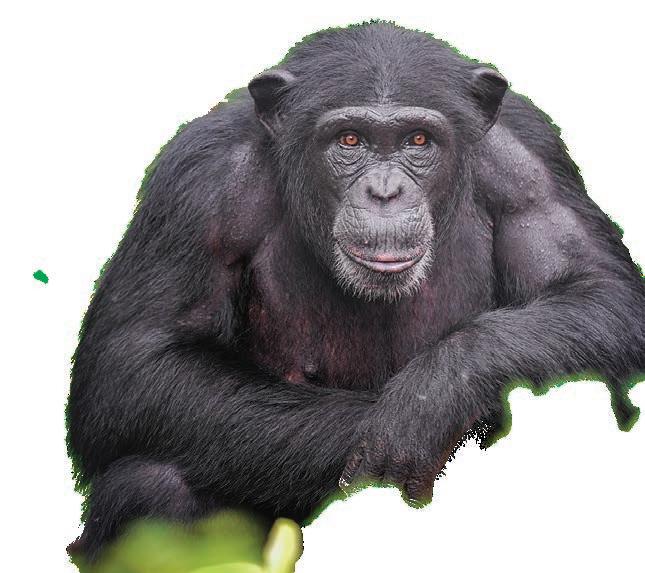
Beads for Chimps
Budongo Snare Removal Project
New Nature Foundation
Mountain lion
California Department of Fish and Wildlife
Bay Area Puma Project
Mountain Lion Foundation
Bay Area Cougar Action Team

Sun bear

Grey wolf

Black bear

California Department of Fish and Wildlife
Animals Asia
Bornean Sun Bear Conservation Centre (Borneo) Working Circle
California Wolf Center
People and Carnivores
B.E.A.R. League
Cotton-top tamarin

Proyecto Tití (Columbia)
African elephant

96 Elephants Amboseli Trust for Elephants (Kenya)
Big Life Foundation
California condor
Pinnacles
Ventana Wildlife Society

California Condor Recovery Program

Grizzly bear

Glacier National Park Conservancy
Zoo-Park Partnerships
People and Carnivores
Reticulated giraffe
The Reticulated Giraffe Project
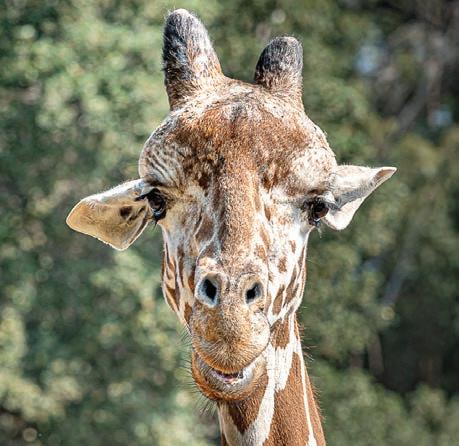
American bison

Iinnii (Bison) Initiative
Glacier National Park Conservancy
Zoo-Park Partnerships
Jaguar
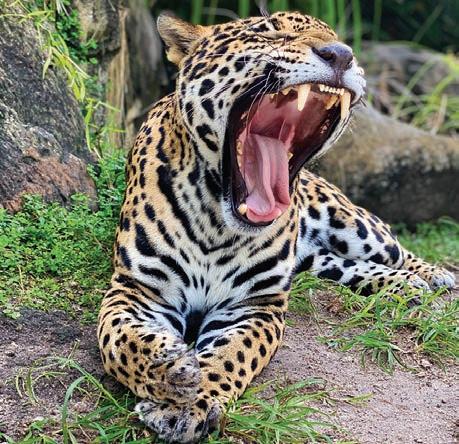
Kaminando
Macaw
 Lemur
ARCAS (Guatemala)
Centre ValBio ARCAS (Guatemala)
Lemur
ARCAS (Guatemala)
Centre ValBio ARCAS (Guatemala)
Chimpanzees: Empowering a new group of women artisans

Oakland Zoo has been the sole supporter of the dynamic Budongo Snare Removal Project for over two decades, employing local community members as eco-guards, wildlife veterinarians, and educators.
In 2019, Oakland Zoo brought the talents of Margaret Kemigisa, from our Beads for Chimps program in Kibale, Uganda, to the community in Budongo, Uganda, to train and empower local women. After years of planning and building, the Budongo Women Basket Weavers Association Workshop and Outpost was unveiled in 2022 — proudly featuring the Oakland Zoo name. By giving these women a true livelihood that is also environmentally sustainable, their daughters can be sent to secondary school. The financial stability enables the community to protect the forest and chimpanzees.

 Local artisans in Budongo
Local artisans in Budongo
African Lions:

Bringing the power of community accomplishment and joy from forest to savannah
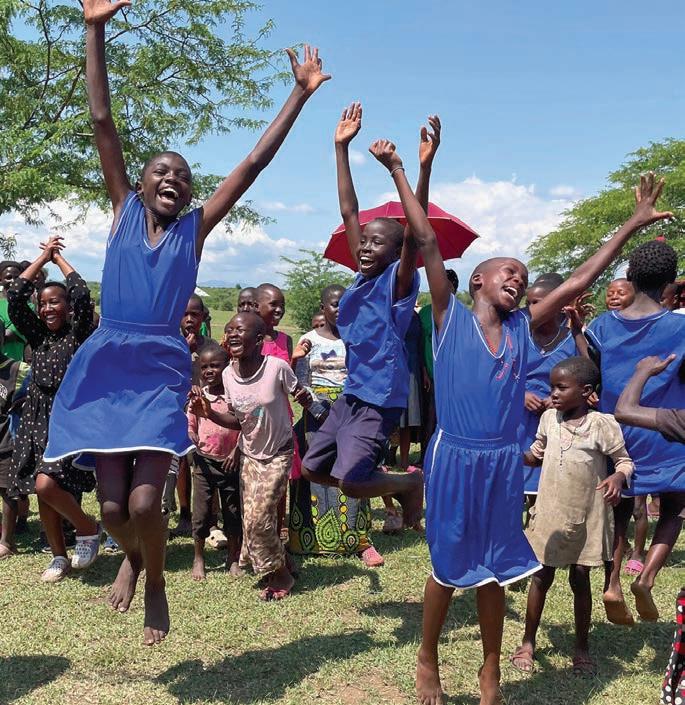
In Queen Elizabeth National Park, Uganda, lions should walk with pride amongst the candelabrum trees. Unfortunately, conflicts with people threaten their future, and a positive community connection to lions was sorely needed. Oakland Zoo connected lion stakeholders Kasenyi Safari Camp and Sibukere Foundation, among others, with the unique skills of the New Nature Foundation (experts who had previously worked with people and chimpanzees) and brought that knowledge to the people and lions in the park. This Oakland Zoo-created alliance worked
throughout 2022 to inspire fuel-efficient stove building in 70 homes. This protected the forest by reducing the need to gather wood by entering the bush where a lion encounter may occur. The highlight of the first year was the Kasenyi Village Inaugural Rocket Stove and Conservation Competitions Festival: with cooking competitions, performances of poetry, and traditional dances about nature. Efforts like these lay the groundwork for community-led conservation of the big cats who share their world.
So much more than a zoo! Thank you to everyone that makes it a necessary part of our world. The work is amazing!!! I am so proud of Oakland Zoo!OAKLAND ZOO FACEBOOK SUPPORTER Dancing and celebrating during the Kasenyi village festival
After months of virtual talks, Cocktails & Conservation returned with three sold-out evenings in 2022. Speakers and audiences enjoyed the interactive format and — of course — the customized cocktails. With engaging, hands-on activities, the Zoo and our conservation allies shared encouraging news from the field with the Oakland community. Proceeds benefited the Zoo’s local and global conservation work.


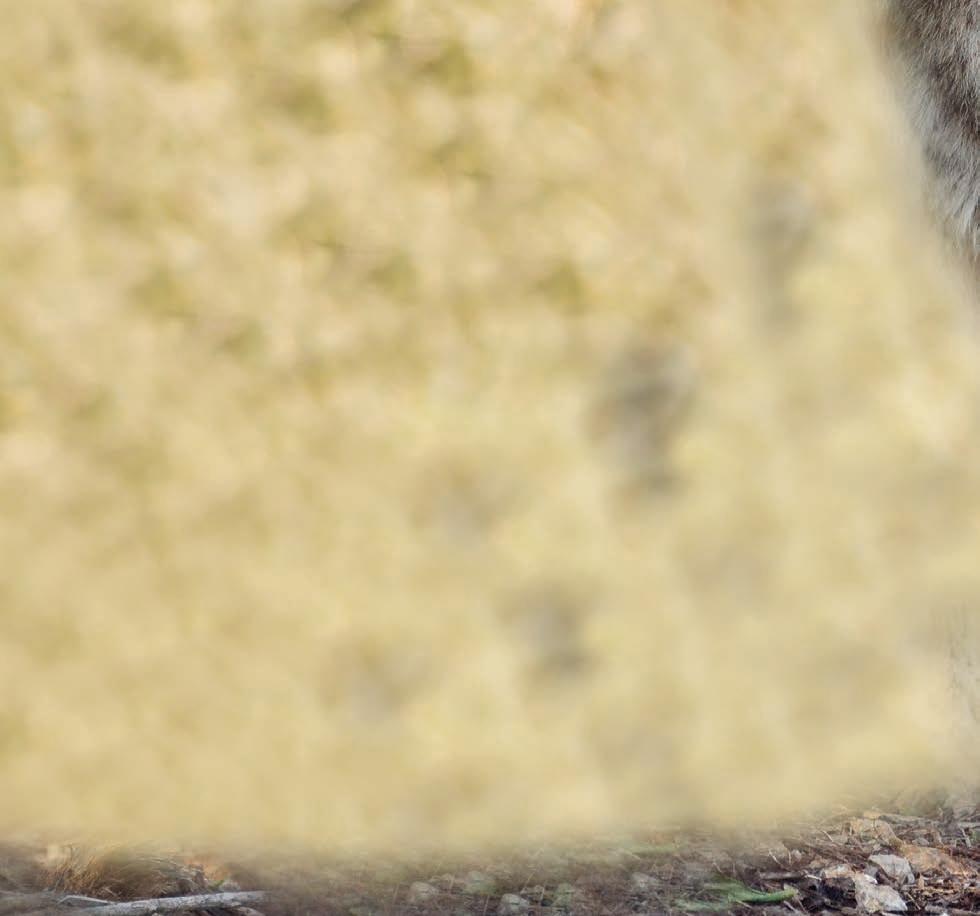
engaged with Cocktails & Conservation LIVE
In May, we brought Cocktails & Conservation (C&C) to Rocky’s Market at Brooklyn Basin. Speakers from the California Native Plant Society, Mountain Lion Foundation, and the Zoo’s Education Department explored climate change impacts on human and animal populations. Against a background of sailboats and seabirds, a spirited Q&A session on a difficult topic unfolded in a fresh, insightful way.


Surrounded by birdlife, Lake Merritt Sailboat House was an appropriate setting for September’s C&C topic: our Black-Crowned Night Heron Rescue Project in downtown Oakland. Oakland Zoo is proud to be a vital part of the work to ensure the City’s official bird continues to nest around Lake Merritt and downtown Oakland. The projects’ aims and achievements were presented by our partners, Golden Gate Audubon Society and International Bird Rescue, and by our own Heron Rescue Team and veterinary staff, who treat the rescued hatchlings before they are released. The highlight was learning that this collaboration saved 140 heron hatchlings that had fallen from their
downtown nests during the 2022 nesting season. The October C&C season finale focused on gray wolves in California and the alliances necessary to allow the peaceful sharing of the wolves’ environment. Presenters included the California Department of Fish and Wildlife, Working Circle, Project Coyote, and a professional rancher who spoke from experience about the difficulties of cattle and wolves sharing the same landscape. Earlier that day, stakeholders affected by the return to California of the gray wolf held a day-long summit, some coming together for the first time. This innovative gathering included an open discussion of how to create a sustainable vision to advance California gray wolf conservation.




Destination: ARCAS, Guatemala
The astounding beauty of the world’s most diverse ecosystems is under siege from illegal wildlife traders who supply the exotic pet trade. The Zoo is permanently committed to supporting frontline work on the illicit capture and exploitation of any species — from butterflies to apes — because doing


Through nearly three decades of work, ARCAS has earned international recognition for its community education, animal rehabilitation, and enforcement support strategies. Every year, officers enforcing species protection laws turn over 300 to 600 illegally trapped mammals, birds, and reptiles to ARCAS. Traumatized and in bad shape, most end up in ARCAS’ Wildlife Rescue & Rehabilitation Center, accredited by the Global Federation of Animal Sanctuaries. When possible, animals are returned to the wild. But when that’s not an option, animals — from toucans and coatimundis to spider monkeys — become on-site partners in its community education programs. The Center includes a quarantine area,
a veterinary clinic, and areas for animal care and rehabilitation, plus a kitchen, dining room, workshop, and housing.
In the past year, Oakland Zoo’s work with ARCAS included directing two groups to its Wild Animal Rescue and Rehabilitation Facility in the Petén region of Guatemala. Just before the start of 2022, our conservation-focused ECO trip included Zoo staff and volunteers — the Zoo Crew — who brought crates of supplies and their hard work to improve the ARCAS Wildlife Rescue Center. About six months later, the Zoo’s education-focused support included ten Teen Wild Guides (TWGs) who brought their enthusiasm and hard work to help with animal care. Continued on next page >

I went on the TWG Guatemala trip years ago. ARCAS is such an amazing place! I wish I could go back.
KRISTINA HARPER, FORMER TEEN WILD GUIDE
As with other Zoo programs, the TWGs have embraced the easing of Covid restrictions, coming back to the Zoo in full force. In July, they flew to ARCAS (Guatemala), where they learned through hands-on care of rescued rainforest animals.

For ten days, TWGs helped ARCAS staff rehabilitate and, when possible, return wild animals confiscated from illicit wildlife traders to the wild. TWGs lived on the ARCAS campus and worked in animal care, doing it all — feeding, cleaning enclosures, and making sure animals had everything necessary to recover. The teens also benefited from seeing research in the wild, living and working in a rainforest, and meeting people from nearby small communities.
At the end of their stay with ARCAS, the group spent two days exploring Guatemala’s Tikal National Park, one of the Maya civilization’s greatest cities. It may have been a toss-up as to which was more awesome after spending many days in the rainforest: the grandeur of this UNESCO World Heritage Site or the wonder of a hotel room hot shower?
With the easing of Covid travel restrictions, Oakland Zoo staff and volunteers could once again travel to ARCAS in Northern Guatemala. The group brought strategic support, muscle, and three large crates of hard-to-get supplies. Their goal was to make a difference in the fight to end the illegal animal trade. Travelers began planning and collaborating with ARCAS months before the December departure.
During early planning calls, the ARCAS staff identified a major need for support in improving elements of the maintenance systems at their Animal Rescue and Rehabilitation Facility. The upgrades had to be suitable for a rainforest environment, and the materials specified had to be available in Guatemala. While the Zoo Crew could bring in some supplies, local vendors would supply replacement and repair parts in the long run. Through a series of planning sessions, ARCAS and the Zoo Crew developed a plan to enhance maintenance systems.
Additionally, to support the community education side of ARCAS’s work, our crew included specific materials in the crates of supplies they brought. Those materials allowed the staff to build and install hands-on teaching resources to engage children in rainforest ecology and the ruinous impacts of illegal trapping. Success often comes from educating the next generation.
After two weeks, it was time to leave. Our travelers left knowing that their time, talent, efforts, and money made a powerful difference in the success of ARCAS’s crucial work.
Zoo & ARCAS staff pose with newly created educational resourcesIn 2022, Oakland Zoo had continued success in partnering with local businesses to connect with and support our community. Our priority when connecting with any business begins with an alignment of mission and values.
Our local partnerships got a jump start in 2019 when Oakland craft brewery Ale Industries approached the Zoo about launching Bay Cat California Ale to support the Zoo’s mountain lion conservation and rescue. Since then, Ale Industries has launched five other beers to benefit conservation of specific species.

In August, the Zoo worked with Oakland Animal Services, East Bay SPCA, and NBC Bay Area to “Clear the Shelters.” On Pet Adoption Day, Zoo guests adopted over 40 cats and dogs. The Zoo’s work to protect animals isn’t solely confined

to wildlife! The Zoo was glad to help animals in shelters find their new families.
When Oakland Zoo took on this year’s Heron Rescue in downtown Oakland, we partnered with Oaklandish, the local apparel manufacturing icon, to design and manufacture tee shirts for our Heron Rescue Team. Oaklandish is a certified B Corp committed to donating at least 2% of revenue to nonprofit and community partners annually. The Heron Rescue team proudly wore the shirts as they saved over 140 hatchlings that had fallen from nests to near-certain death.
The Zoo looks forward to expanding our marketing partnerships with Oakland businesses that share our commitment to wildlife. For more information, email partnerships@oaklandzoo.org.
Fur, Fun, and Friends at the Zoo
For eight weeks last summer, Oakland Zoo enthusiastically welcomed children from kindergarten to 5th grade for ZooCamp. After two years of pandemic closures and restrictions, all eight weeks of ZooCamp were filled within 24 hours of registration opening in March. We also offered shorter ZooCamp sessions when most schools close for winter, spring, or holiday breaks.
ZooCamp provides a unique opportunity for children to connect with nature, animals, and each other in a secure and nurturing setting. It integrates play-based learning into very active days, including playing in Arroyo Viejo Creek and visiting the animals to learn about their care and where they live in the wild.
783

ZOOCAMPERS attended camp across 9 sessions


This year’s added bonus was to engage with other children for fun and relaxed learning, which refreshed interpersonal social skills many missed with school closures. ZooCamp offers kids a safe space to be creative, try new things, build empathy, and explore their place in nature. In addition to activities geared towards animals, ZooCamp instructors lead activities like arts and crafts, community circles, and theater. The curriculum also integrates age-appropriate steps youngsters can take to protect animals and their habitats. For instance, as they enjoy the Zoo campus, teachers can easily highlight how recycling and reusing helps keep animals’
wild homes safe and clean. By reinforcing behaviors that support healthy environments, children quickly understand how their choices make a difference.
ZooCamp’s fun and active learning sows the seeds for tomorrow’s guardians of nature. It’s true that “we protect what we love.” Our ZooCampers learn to love the outdoors and the animals. As they mature, protecting both can become second nature.
The Zoo is poised to enhance education that young people need to respond to the great challenges ahead. We want to help empower our youth to understand they can be a solution to the growing climate challenge, the preservation of nature, and the importance of wildlife we all know and love.
 NIK DEHEJIA, CHIEF EXECUTIVE OFFICER OAKLAND ZOO
NIK DEHEJIA, CHIEF EXECUTIVE OFFICER OAKLAND ZOO
In 2022, Oakland Zoo launched the California Climate Learning Project to increase climate and environmental literacy for K-12 students. In a multi-year process, the Zoo’s education professionals collaborated with community and Oakland Unified School District researchers, teachers, indigenous community leaders, experts in technology and design, and students to create an exciting curriculum built on science, technology, engineering, the arts, and mathematics (STEAM).

These specialists from a wide range of backgrounds and disciplines created the curriculum and designed the hands-on Discovery Kits teachers borrow from the Zoo for classroom use. The curriculum and materials are grouped thematically into four sections: California’s
Biodiversity, Climate Change, Indigenous Cultures, and Endangered Species. We are grateful for the contributions made by indigenous elders Vincent Medina and Louis Trevino, who contributed their perspectives and history to this two-year planning process.
With this deeper focus on climate change, the Zoo’s education programs rely on the animals in our care to exemplify how human activity is affecting Earth’s climate system. The need for climate literate citizens is urgent. This development in Zoo education programming represents the future of climate literacy.
This project was made possible by support from The Hearst Foundations and The Joseph and Vera Long Foundation. Additional funding was provided by the Specified General Fund for the Museum Grant Program under the California Cultural and Historic Endowment.

Inspiring community solutions for our changing climate


Oakland Zoo is proud to be the only zoo partnering with the UC Naturalist Program and the UC Division of Agriculture and Natural Resources on this pioneering course of study. The Climate Stewardship Certificate will expand climate literacy among the general population and increase access to current, locally relevant climate science.
Targeted at people interested in working on climate issues, the certificate can be offered by organizations teaching formal or informal science. The Zoos’ first group of trainees completed this eight-week program in March of 2022. Since then, we have seen how it elevates climate stewardship and encourages community solutions to the causes and problems of a changing climate.
More about this innovative certificate:
• Oakland Zoo is the only zoo offering this certificate. Our first session reached its capacity of 22 shortly after registration opened.
• It is offered in junior colleges, nature centers, and science museums focused on improving public understanding of climate science.
• This eight-week fee-based course meets weekly. To assure the widest accessibility, the Zoo charges the lowest fee of any other organization now offering the certificate, and scholarships are available.
As this initiative rolls out across the state and the number of graduates increases, it will result in vertically integrated support — local to statewide — for action to mitigate the devastation of climate change happening now.



Naturalist Henry Snow establishes the Snow Zoo by Lake Merritt after his 1919 – 1922 Snow Expedition to Africa for the Oakland Museum. Henry’s son, Sidney, and other family members assume the care and feeding of the growing zoo.
1922
19251927
Sidney convinces the Bank of Italy to assume the mortgage for Durant Park (current Oakland Zoo property). Sidney moves his animals to the park and opens the Zoo.

1934
Noise and expansion concerns drive Henry to gift many of the animals to the City of Oakland, which are moved to Sequoia Mountain Park (now Joaquin Miller Park). Sidney continues to care for the remaining animals by Lake Merritt.
1937
Sidney advocates that Durant Park become part of the State Park system. Joseph Knowland, then Chairman of the California State Park Commission, supports the effort and secures Knowland Park for the State.
1950
After many of the animals die at the City’s Sequoia Mountain Park, Sidney advocates and wins the support of Oakland citizens to return the animals to the Zoo. Sidney forms the Alameda County Botanical and Zoological Society as a support organization.
19571965
William Penn Mott, Jr., serving as Director of the Society, led the Zoo into a new era of growth and development. It included a Master Plan for the Zoo, hiring Dr. Joel Parrott, DVM as Assistant Director, establishing a fullyequipped animal hospital, and making numerous renovations on facilities and exhibits.
19821984
Major improvements were made to the Zoo, including a new home for Effie the elephant and the opening of the Baby Zoo in 1965.
The Oakland Zoo’s Education Department was established to provide school and community groups with on-site classes and a ZooMobile outreach program. Today, this department serves over 50,000 students annually.
Dr. Joel Parrott, DVM was appointed Executive Director. An even more aggressive development plan was implemented, and over the next 20 years a complete renovation of the Zoo occurred in 6 phases.
In January, the African lion exhibit “Simba Pori” (Swahili for “Lion Country”) opened. A pride of six lions is now residing in a savanna and woodland setting complete with kopje rock structures and a pond. Flamingo Plaza, located at the front entrance to the Zoo, opened, providing a home to 11 lesser flamingos and several African spoonbills.
Oakland Zoo was accredited by the Association of Zoo and Aquariums (AZA), ranking in the top 27% of Zoo’s nationwide.
The African Savanna opened in April. The area features eleven animal exhibits and highlights eighteen animal species of the savanna. The landscaping contains over seventy-five plant species from South and East Africa.
Maddie’s Center for Science and Environmental Education opened. The 17,500 squarefoot Education Center features four classrooms, an auditorium, a library, and a theater, as well as offices for the Education Department and Docents.
The Wayne and Gladys Valley Children’s Zoo was completed. Representing the largest renovation and construction in the Zoo’s history, this three-acre area features tortoise, ring-tailed lemur, otter, Malayan fruit bats, alligator, goats, a sheep barn and petting yard, play structures, and many more.
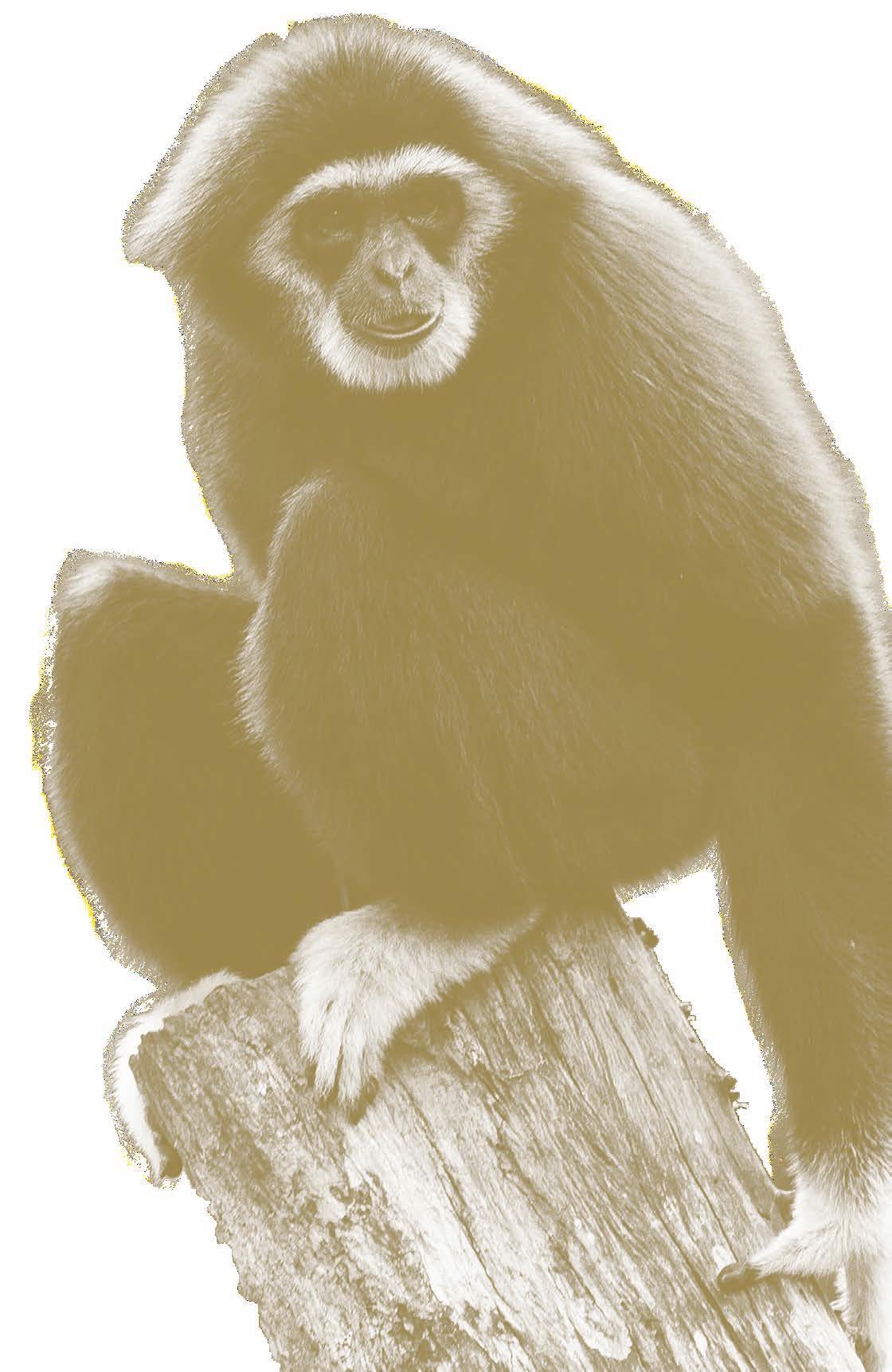
The “Karibu Village,” the Zoo’s main entrance pavilion, officially opened. The 20,000 square-foot project included a new gift shop, restaurant, membership office, restrooms and outdoor dining area. The tiger exhibit’s renovation/expansion was completed in July.
2006
The clean up and restoration of the Arroyo Viejo creek, which runs through the Zoo, was completed. New additions include 6 outdoor classrooms, instructional signage, shoring up of the creek banks, and removal of non-native species.
2007
The Oakland Zoo launched Zoo-toCommunity, with the goal of providing free Zoo admission and transportation to qualified schools, daycare and Head Start programs, early childhood development centers and community organizations.

2010
Grand opening of our 17,000 square foot, state-of-the-art Wayne and Gladys Valley Veterinary Hospital, the largest wild animal veterinary facility in Northern California.
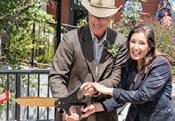
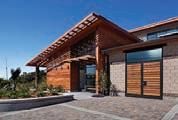
Wild Australia opened, accessible via the Outback Express Adventure Train. It’s a journey through an Australian-themed exhibit which features wallaroos and emus.

Oakland Zoo broke ground on the “California Trail,” project, doubling in size after adding 56 acres for new California native animal enclosures, a learning center, and on-site conservation activities.
2013
2015
The Steve and Jackie Kane Condor Recovery Center opened, a facility specifically designed to treat sick and injured condors. The Biodiversity Center also opened in 2013, serving as a breeding, research, and education facility devoted to the conservation of endangered and threatened animals, plants, and habitats.
2017
The Landing Café and aerial gondola open as part of the California Trail.
Longtime Chief Executive Officer Dr. Joel Parrott retires; Nik Dehejia succeeds him as CEO after a 15-year tenure at the Zoo.
 The California Trail, 56acre expansion, opens to the public. 2018
The California Trail, 56acre expansion, opens to the public. 2018
The first group of students graduate from Oakland Zoo’s UC Climate Stewards certification course after learning how to advance ecosystem resilience and solutions to local problems caused by climate change.
3/10
Oaklandish collab keeps it 100 with a t-shirt celebrating the centennial by showcasing iconic Oakland Zoo animals and The Town’s famous landmarks.

Oakland Roots Sports Club and Zoo members come together to cheer on our local soccer team during Oakland Zoo night at Laney College.

4/16
Oakland Zoo installs the “100 Year Vision Tree,” created by the Giant Peach Art Collective and invites Zoo visitors to add their visions for Oakland to the tree.

Ale Industries releases a limited time brew “One Hunny’d Years,” celebrating Oakland Zoo’s Centennial milestone. Cheers to one hunny’d more!
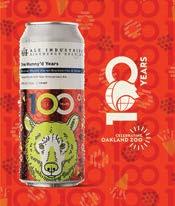
Oakland Zoo celebrates its centennial year with a party in Snow Park, the Zoo’s first location. The office of Oakland Zoo’s Mayor, Libby Schaff, presents CEO Nik Dehejia with a key to the city.
6/13
1,300 Zoo fans attend Walk in the Wild, the Zoo’s signature fundraiser, and stroll through the Zoo while sampling cuisine from local chefs and restaurants, microbreweries, and wineries. 6/25
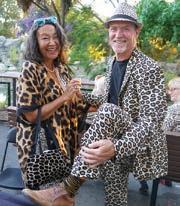

With support from donors, Oakland Zoo undertakes the rescue and transport of four big cats from a defunct roadside attraction in Oklahoma. After months of medical treatment and care, tigers Mia and Lola now enjoy a forever home at Oakland Zoo.

8/13
Oakland Zoo’s Heron Rescue Team concludes five months of twice daily foot patrols around downtown Oakland and Lake Merritt that result in the rescue of 140 BlackCrowned Night Heron hatchlings.

8/15
Oakland Zoo volunteers, docents, and interns gather to celebrate groundbreaking on an upgrade and remodel of the flamingo aviary and habitat.
Returning to Oakland Zoo for the first time in two decades, Jane Goodall, primatologist, conservationist and global hero inspires over a hundred students from Oakland Unified School District by sharing the story of her humble beginnings and lifelong dedication to chimpanzees and conservation.

9/22
10/6
Following their rescue, and months of medical care and recuperation at Oakland Zoo Veterinary Hospital, two mountain lion cubs move to a forever home at the Living Desert Zoo & Gardens in Palm Desert, California.

10/17
Oakland Zoo joins People for the Ethical Treatment of Animals on a five-day rescue of animals from a roadside attraction. Oakland Zoo staff return with a dozen reptiles now living in humane and secure conditions.

Conservation-minded (and cocktail-enjoying) community members come to the Zoo to hear how conservationists are building ethical and sustainable relationships between humans and wolves in California.
11/8
9/22
Oakland residents approve a tax measure to strengthen the Zoo’s animal care, wildlife rescue and community education, and to provide an affordable and accessible urban oasis for all.




Officers Directors
Nancy Clark
Co-chair
Dennis DeDomenico Co-chair
Cynthia Stoddard
Co-chair
Elogeanne O. Matson Grossman Secretary
Cathy Langridge Vice Chair
Partick Sherwood Treasurer
Nik Dehejia Chief Executive Officer
Adam Miller Chief Financial & Administrative Officer
Colleen Kinzley
Vice President Animal Care, Conservation, and Research
Lea Bolster Van Ness
Michael Bruck
Jennifer Esmeralda Delaney
Jennifer Fall
Marv Friedman
Jessica Huard
Brian Hughes
Liz Ludwig
Steve McCann
Kevin Rodriguez
Peter Ross
Aarti Sabhlok
Shana Simmons
Fiona Tang
Amy Tharpe Peterson
Joel J. Parrott
Trustee Emeritus
Erin Dogan Vice President of Marketing and Communications
Kristin Heller Senior Vice President, Revenue and Impact
Michelle Myers
Vice President of People & Culture
Amy Gotliffe
Vice President of Conservation
Dr. Alex Herman Vice President of Veterinary Services
Caterina Meyers, PHD Vice President of Education
Bob Westfall Vice President of Park Services
The fact that you have taken time out of your schedules and are here inspires and motivates us to keep going. We see from this that we are not alone in our work and that we have the support of large organizations like Oakland Zoo. We will be stronger together as we continue this work (to combat the illegal wildlife trade).
DR. FERNANDO MARTINEZ DVM, DIRECTOR OF ARCAS PETÉNYou have so many innovative programs and projects, most recently a new home for Mia and Lola, new flamingo habitats, Pet Adoption Day, and getting Oakland Zoo community engaged and involved while making Oakland Zoo a vibrant environment and such a joy during every single trip.
JIMMYWANG, OAKLAND ZOO SUPPORTER
TO THE ANIMALS WE LOST LAST YEAR: YOU’VE LEFT A LASTING IMPRESSION ON US, AND EVERYONE WHO VISITED THE ZOO. WE CONTINUE OUR WORK IN YOUR MEMORY.
